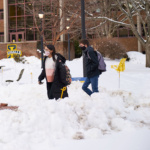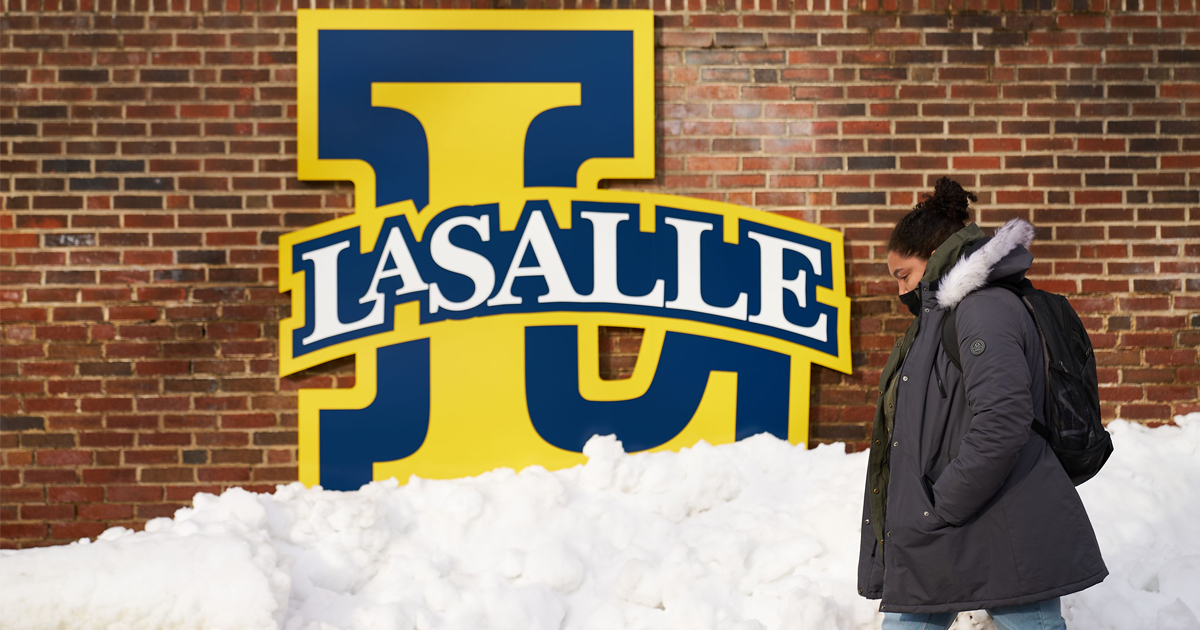La Salle University
Amid virtual learning, will snow days melt away?
La Salle experts explain the future of snow days for students, educators, and families.
Virtual learning has given students and educators a way to overcome barriers that previously separated them, like inclement weather.
But during this rather snowy winter in the Philadelphia area and other parts of the country, schools have grappled with deciding whether to grant snow days free of learning or continue holding classes virtually.
Laura Roy, Ph.D., professor and chair of the education department at La Salle University, feels that school administrators should be careful not to overvalue the upside of keeping the curriculum from being temporarily disrupted.
“Maybe we realize that the snow day where kids get to play outside and teachers get to take a breath is as valuable as the math lesson that day,” said Roy.
With a son in third grade, Roy has experienced the snow day dilemma as both an educator and a parent. She weighed in on the value of snow days, joined by several other La Salle University faculty experts:
- Julie Hill, Ph.D., an assistant professor of psychology who is an expert in developmental psychology and also studies teaching and learning
- Kimberly Lewinski, Ph.D., an associate professor of education with a background in elementary education—and three school-age children
- Trent McLaurin, Ph.D., an assistant professor of education who has worked as a special education practitioner in a variety of K-12 school settings
- Christen Rexing, Ph.D., an assistant professor of public health who is a public health policy expert and has a daughter in second grade and a son in pre-K
Virtual learning isn’t one size fits all
When the COVID-19 pandemic is over and students and teachers fully reunite, it won’t be as simple as just sending everyone back online for snow days, Hill said, especially for younger students with limited virtual learning experience.
“It has taken awhile for young kids to learn how to ‘do school’ in this virtual environment,” said Hill. “Once we’re out of the pandemic, there will be children who have never experienced virtual school. To ask them to figure it out for an isolated snow day will accomplish very little and likely leave many students, teachers, and parents frustrated.”
The bandwidth of teachers also needs to be considered, according to Roy.
“I think the public is always a little too quick to decide what teachers should be doing,” said Roy. “It’s not so easy to just say, ‘OK, it’s snowing. We’re going virtual today.’ Are teachers supposed to have lesson plans for virtual and in-person classes all winter? I’m not sure many people are thinking about what that actually looks like.”
Snow day inequity
The technology gap among students complicates matters. Virtual learning opportunities aren’t the same for everyone, particularly students from lower-income households, without reliable access to internet or devices, or those who live in rural areas.
Hill noted that many school districts have supplied their students with laptops during the pandemic, a solution that isn’t feasible for an isolated snow day.
Some students also have responsibilities that others may not. Snow days might require a high school student to babysit a younger sibling. They also provide students with a chance to earn income.
 “A snow day is an opportunity for some kids to make money,” said Lewinski. “That’s when they go out and shovel other peoples’ driveways and walkways. Maybe it’s pocket money for them or money that they can contribute for their family. That’s the reality for some students.”
“A snow day is an opportunity for some kids to make money,” said Lewinski. “That’s when they go out and shovel other peoples’ driveways and walkways. Maybe it’s pocket money for them or money that they can contribute for their family. That’s the reality for some students.”
“Everyone can benefit from a snow day”
Rexing believes that letting snow days remain a rite of passage filled with sledding and snowmen aligns with the emphasis in our society on self care and work-life boundaries.
“This idea that we always have to be on, that there’s no such thing as downtime, it’s just not healthy,” said Rexing. “What kind of message are we sending our kids by turning snow days into virtual learning days? Everyone can benefit from a snow day: parents, teachers, and kids.”
La Salle’s experts agree that constructive opportunities to break the cycle of constant connectivity—like good, old-fashioned snow days—should be seized.
“Schools need to be mindful that students, families, and teachers need time to take a break when there is a disruption in routine, like a snow day,” said McLaurin.
Leaning into the flexibility
While there’s value in permitting snow days, virtual learning should be encouraged, too.
Rexing pointed to asynchronous learning, where students catch up on their reading without being in Zoom rooms, for example, or teachers are available in office hours for extra help.
“We’ve seen during the pandemic that high-schoolers are doing better than the elementary school kids at virtual learning,” Lewinski added. “It is very hard to have a kindergartener or a first grader sitting in front of a computer trying to learn all day.”
“Snow days should be looked at as enrichment days moving forward,” said McLaurin. “Schools should consider the ability to provide access to quality enrichment and learning during emergency closings that are flexible, responsive, and engaging for students.”
—Patrick Berkery
